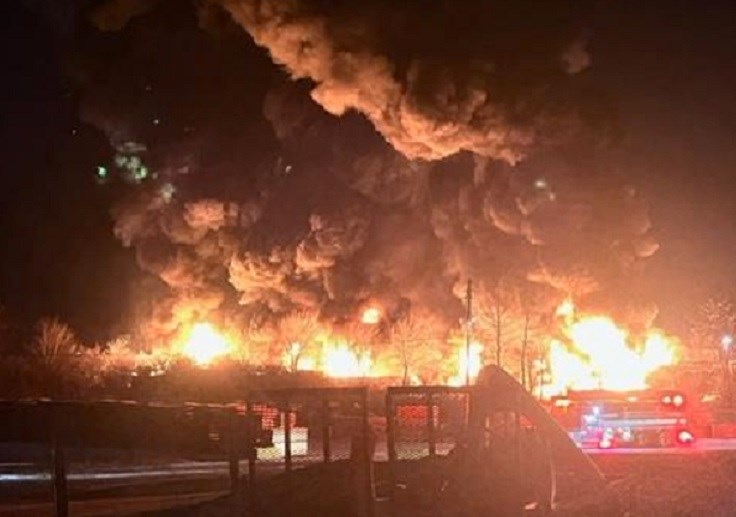Yes. This car is undergoing a polymerization reaction inside the tank car. The reaction is performed in controlled reactors at a manufacturing plant where monomers are reacted into polymers. During the reaction heat, gas, and pressure are created. Due to the instability of these monomers such as vinyl chloride, styrene, butadiene, ethylene , etc they are shipped mixed with an inhibitor (chemical) until it’s use at the chemical plant. If too much time passes between the addition of the inhibitors and the actual use in polymer production, a polymerization reaction can occur, if the container holding a monomer is exposed to elevated temperatures, the inhibitors can break down allowing the polymerization reaction to occur. So bringing us back to the East Palestine derailment here : the Vinyl Chloride car(s) have been sitting an additional 4 days passed delivery date AND have been exposed to significant elevated temperatures (radiant heat from a massive fire) and have more than likely begun the polymerization reaction inside the rail car. Remember the reaction generates heat, gas, and pressure. So basically this 80 ton rail car with 5/8” thick steel shell is becoming a giant pressure cooker. Worse, if the tank car is on its side or upside down, the relief valve on the cars will not operate ( formed polymers are most often solids produced from liquid monomers so the solid polymer often clogs up a relief valve) Unlike a BLEVE where liquified gases inside a tank are heated from the outside via fire and therefore can often be cooled with master streams to prevent an explosion, the polymerization reaction is generating its own heat from within the tank as well as building up pressure from the gasses produced and the expansion produced. Sometimes a runaway Polymerization reaction will end without bursting the rail car or tank , historically there have also been polymerization reaction explosions which have blasted the tank car like a giant hand grenade. So responders will monitor the car temperature and wait the reaction out. BTW - an example of a controlled polymerization reaction is a can of foam window and crack sealant. The can contains liquid which you shake up prior to use - as you depress the button on the can top the liquid is expelled and converts to a semisolid upon contacting air and expands tremendously until it completely solidifies. Now picture that same process going on within an 80 Ton steel tank with no outlet. ! That concludes todays science class



. Stay safe

 www.wfmj.com
www.wfmj.com

 www.wkbn.com
www.wkbn.com

 www.wtae.com
www.wtae.com

 www.wfmj.com
www.wfmj.com









